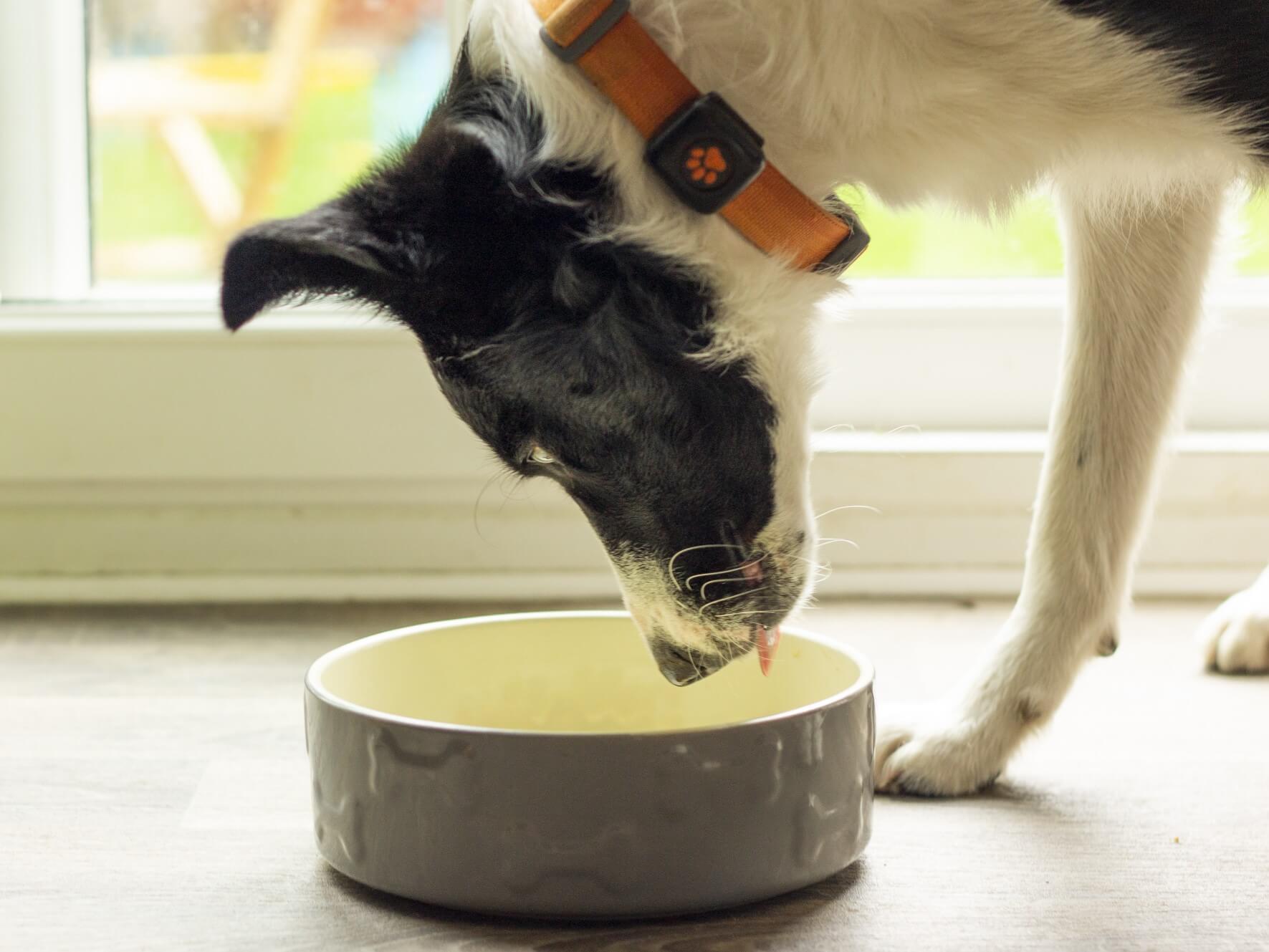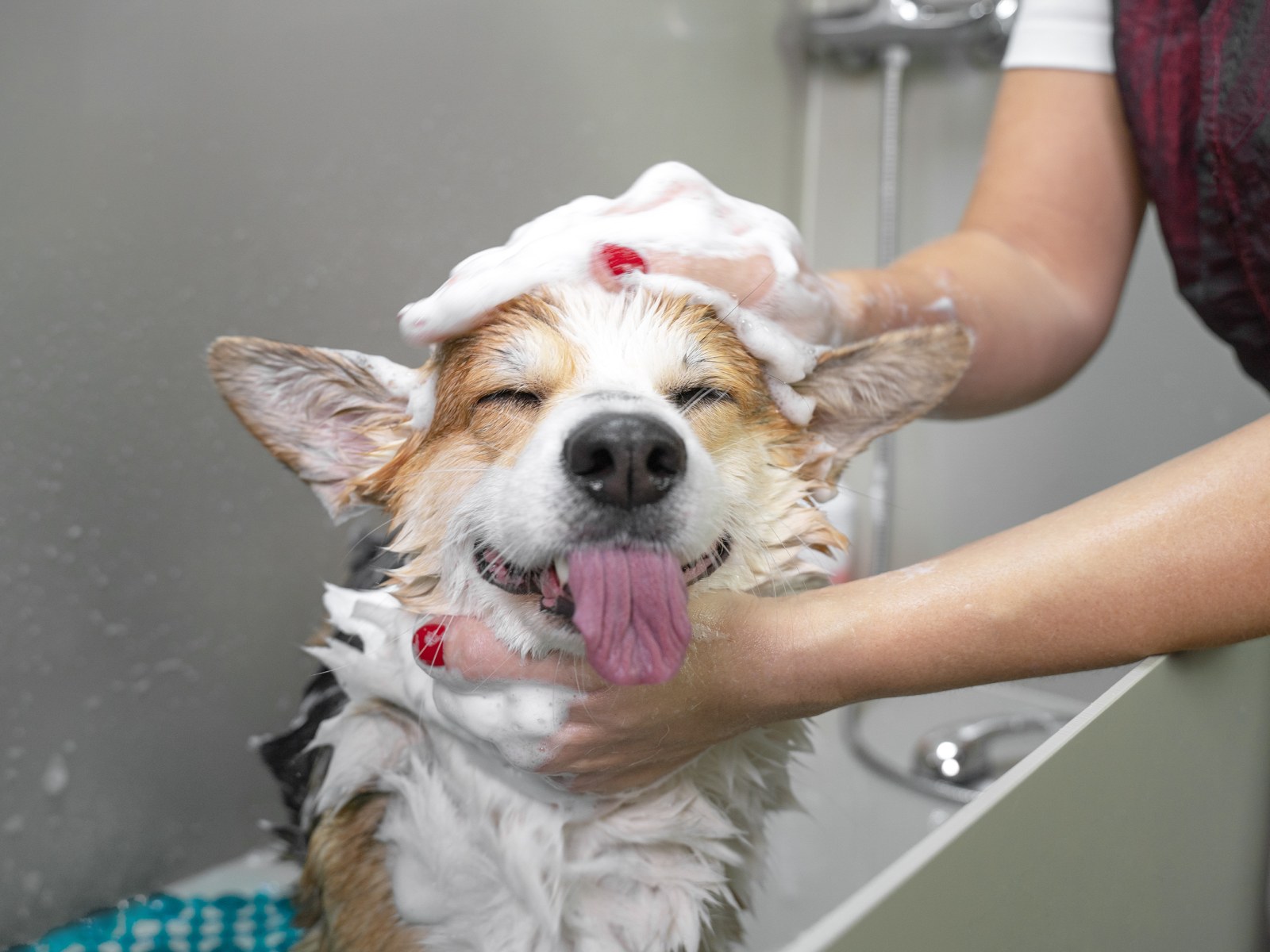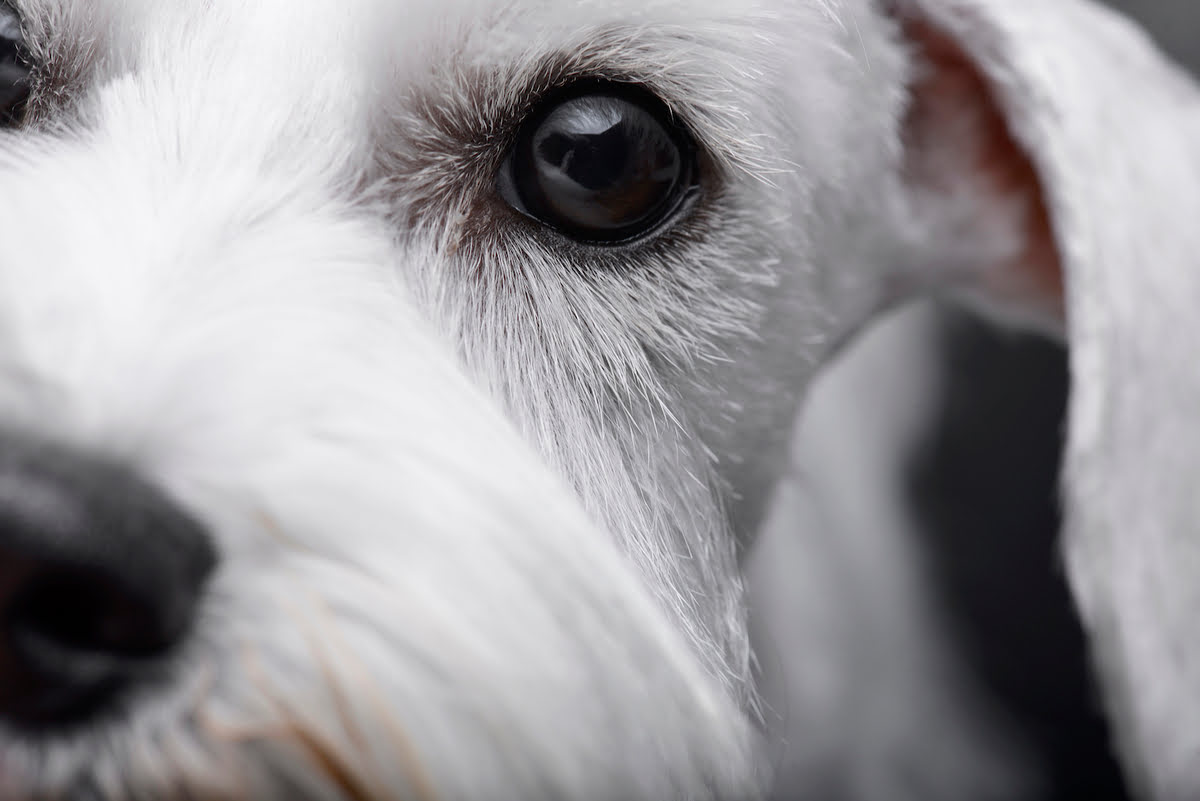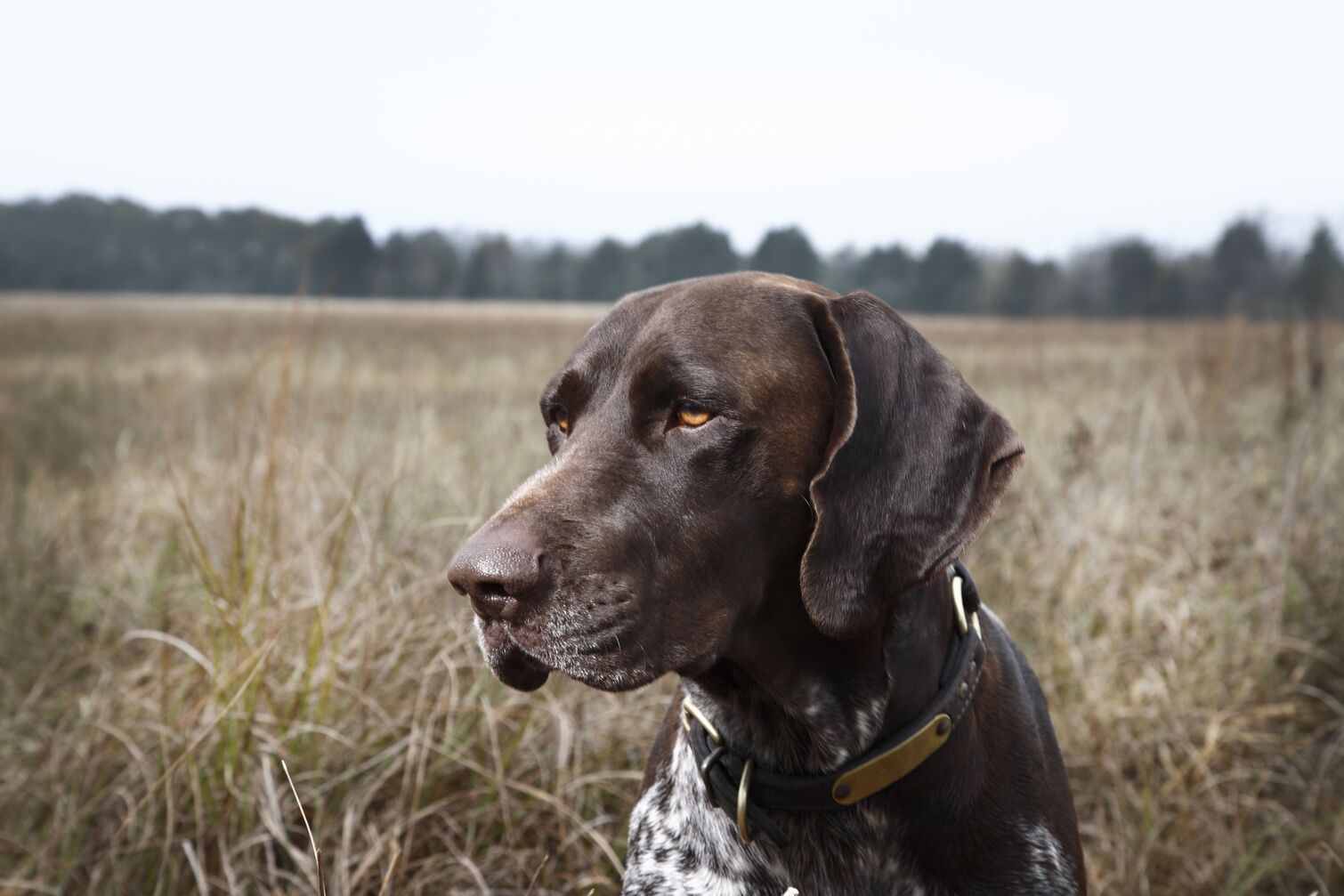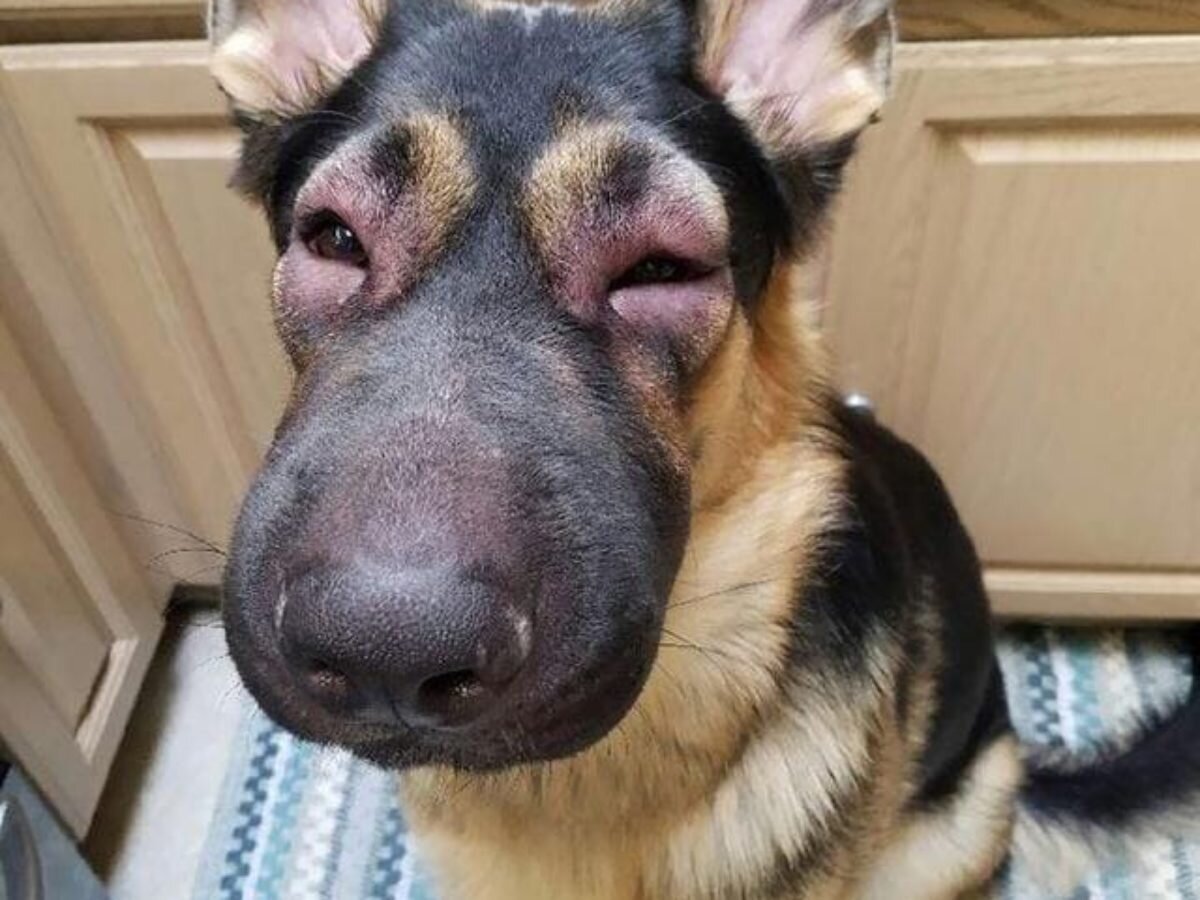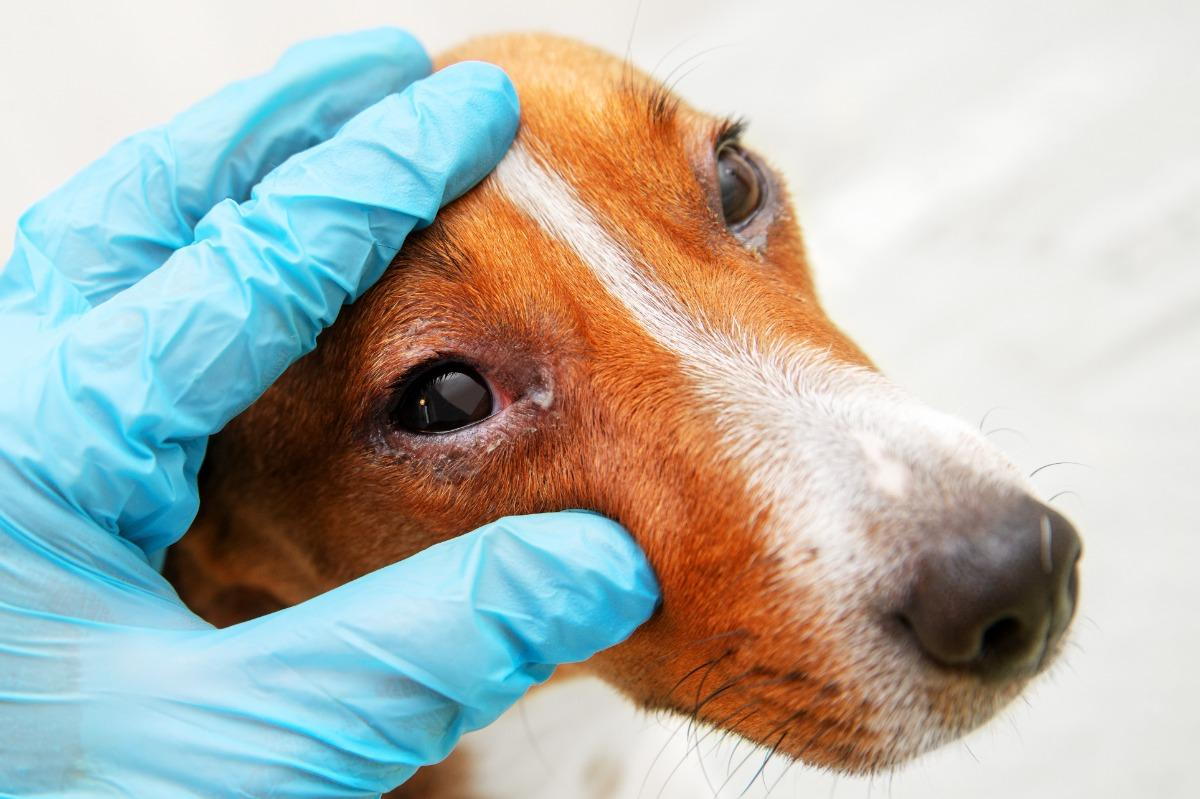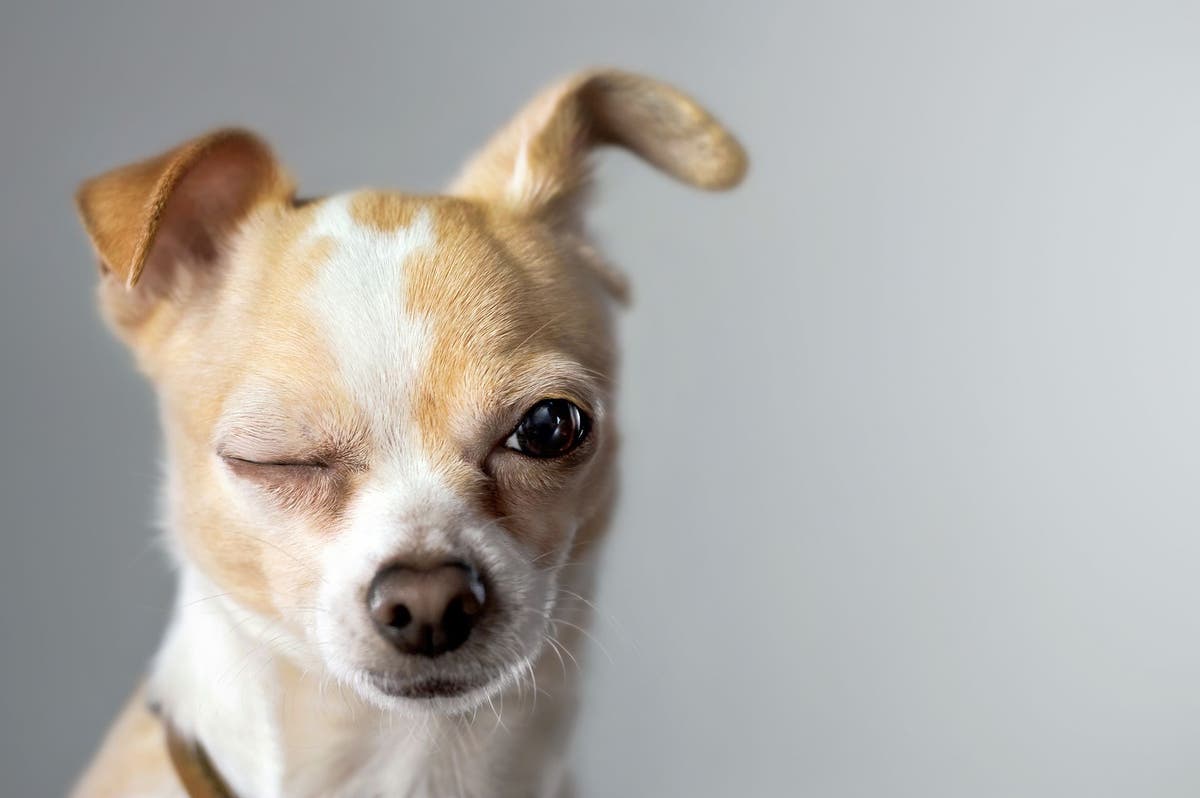Home>Health & Wellness>Common Health Issues>Eye and Ear Health>What To Do About Cherry Eye In Dogs
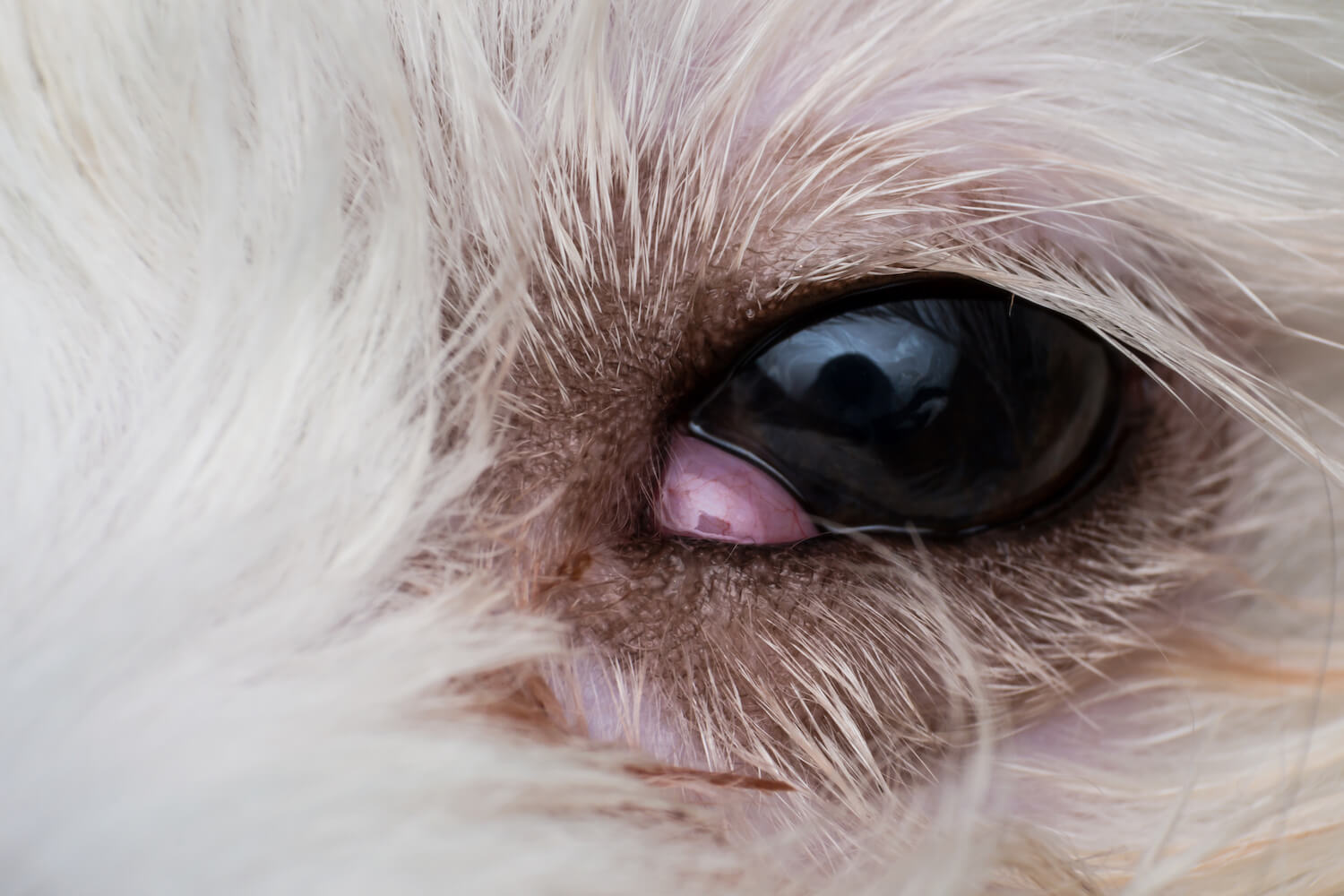

Eye and Ear Health
What To Do About Cherry Eye In Dogs
Published: February 12, 2024
Learn about the causes and treatment options for cherry eye in dogs, and how to maintain their eye and ear health. Find expert advice and tips here.
(Many of the links in this article redirect to a specific reviewed product. Your purchase of these products through affiliate links helps to generate commission for Pawsomeoldies.com, at no extra cost. Learn more)
Table of Contents
Introduction
Cherry eye is a common condition that can affect dogs of all breeds and ages. It is characterized by the prolapse of the third eyelid gland, leading to a red, fleshy mass protruding from the corner of the eye. This condition, formally known as nictitans gland prolapse, can be alarming for pet owners, but with prompt attention and proper care, it can be effectively managed.
Understanding the underlying causes, symptoms, and treatment options for cherry eye is crucial for dog owners to provide the best care for their furry companions. While it may not be a life-threatening condition, addressing cherry eye promptly is essential to prevent potential complications and discomfort for the affected dog.
In this comprehensive guide, we will delve into the intricacies of cherry eye in dogs, exploring its symptoms, causes, treatment options, surgical interventions, home care measures, and preventive strategies. By gaining a deeper understanding of this condition, dog owners can equip themselves with the knowledge needed to recognize, address, and potentially prevent cherry eye in their beloved pets.
Read more: What To Do About A Dog With Wheat Allergies?
Understanding Cherry Eye in Dogs
Cherry eye, also known as nictitans gland prolapse, is a condition that commonly affects dogs, particularly certain breeds such as Bulldogs, Beagles, and Cocker Spaniels. The term "cherry eye" stems from the appearance of the affected gland, which protrudes from the inner corner of the eye, resembling a small, red cherry. This gland, formally known as the third eyelid gland, plays a crucial role in tear production and eye lubrication.
The third eyelid gland is normally situated within the dog's lower eyelid, contributing to the overall health and function of the eye. However, in cases of cherry eye, this gland becomes displaced or prolapsed, leading to its conspicuous appearance. While the exact cause of cherry eye remains unclear, it is believed to stem from a weakness in the connective tissue that supports the gland, allowing it to dislodge from its normal position.
It's important to note that cherry eye can occur in one or both eyes, and while it may not initially cause discomfort to the affected dog, it can lead to irritation, dryness, and potential complications if left untreated. Additionally, the visible protrusion of the gland can be distressing for pet owners, prompting them to seek prompt veterinary care.
Understanding the anatomical and physiological aspects of cherry eye is crucial for dog owners, as it enables them to recognize the condition and seek appropriate care for their pets. By familiarizing themselves with the typical appearance of cherry eye and being attentive to any changes in their dog's eye health, pet owners can play a proactive role in addressing this condition.
In the subsequent sections, we will delve deeper into the symptoms, causes, treatment options, surgical interventions, home care measures, and preventive strategies related to cherry eye in dogs. This comprehensive exploration aims to equip dog owners with the knowledge and insights necessary to navigate the complexities of this condition and provide optimal care for their canine companions.
Symptoms of Cherry Eye
Cherry eye in dogs manifests as a distinctive, fleshy mass protruding from the inner corner of the eye, resembling a small, red cherry. This prominent protrusion is the result of the third eyelid gland becoming displaced or prolapsed, leading to its conspicuous appearance. While the visual presence of the prolapsed gland is the hallmark symptom of cherry eye, there are additional signs that dog owners should be attentive to.
-
Visible Red Mass: The most apparent symptom of cherry eye is the presence of a red, fleshy mass protruding from the corner of the affected eye. This protrusion is often accompanied by swelling and can cause discomfort for the affected dog.
-
Eye Irritation and Discharge: Dogs with cherry eye may exhibit signs of eye irritation, including increased blinking, squinting, or pawing at the affected eye. Additionally, there may be a noticeable increase in tear production, leading to excessive tearing and ocular discharge.
-
Dryness and Redness: The affected eye may appear dry and red, indicating inflammation and potential discomfort for the dog. The surrounding tissues may also exhibit signs of irritation and redness.
-
Blinking and Squinting: Dogs with cherry eye may display increased blinking or squinting in an attempt to alleviate discomfort or reduce irritation in the affected eye.
-
Unilateral or Bilateral Presentation: Cherry eye can occur in one or both eyes, and while it may initially affect only one eye, there is a possibility of bilateral involvement over time.
Recognizing these symptoms is crucial for dog owners, as it enables them to promptly seek veterinary care and intervention for their pets. While cherry eye may not initially cause significant discomfort for the affected dog, addressing it promptly can prevent potential complications and discomfort in the long run. By remaining vigilant and attentive to any changes in their dog's eye health, pet owners can play a proactive role in identifying and addressing cherry eye in its early stages.
Causes of Cherry Eye
The exact causes of cherry eye in dogs remain a subject of ongoing research and debate within the veterinary community. While the precise underlying mechanisms are not fully understood, several factors are believed to contribute to the development of this condition. One prevailing theory suggests that a weakness in the connective tissue that supports the third eyelid gland may play a pivotal role in the onset of cherry eye. This weakness can lead to the gland becoming displaced or prolapsed, resulting in its conspicuous appearance at the inner corner of the affected eye.
Additionally, genetic predisposition is considered a significant factor in the development of cherry eye, particularly in certain dog breeds. Breeds such as Bulldogs, Beagles, Cocker Spaniels, and other brachycephalic breeds are believed to have a higher susceptibility to this condition, indicating a potential hereditary component. The anatomical characteristics and genetic makeup of these breeds may contribute to the weakening of the supportive tissues around the third eyelid gland, increasing the likelihood of its displacement.
Furthermore, environmental factors and underlying anatomical abnormalities may also contribute to the development of cherry eye. Trauma or injury to the eye area, chronic eye irritation, or inflammation can potentially impact the stability of the connective tissues, predisposing the third eyelid gland to prolapse. Additionally, anatomical anomalies or abnormalities in the eye structure may create conditions conducive to the displacement of the gland, further exacerbating the risk of cherry eye development.
It is important to note that while the aforementioned factors are associated with the onset of cherry eye, the condition can also occur spontaneously without any discernible predisposing factors. The interplay of genetic, anatomical, and environmental influences underscores the multifaceted nature of cherry eye, highlighting the complexity of its etiology.
By gaining insights into the potential causes of cherry eye, dog owners can develop a deeper understanding of this condition and its predisposing factors. This knowledge can empower pet owners to take proactive measures in caring for their dogs, including seeking prompt veterinary attention and implementing preventive strategies to mitigate the risk of cherry eye development.
Treatment Options for Cherry Eye
Addressing cherry eye in dogs typically involves a multifaceted approach aimed at alleviating discomfort, reducing inflammation, and restoring the normal position and function of the prolapsed third eyelid gland. When it comes to treatment options for cherry eye, veterinarians may consider various strategies tailored to the individual needs of the affected dog. These treatment modalities are designed to address the underlying causes of cherry eye and mitigate potential complications associated with this condition.
Non-Surgical Management:
In cases where cherry eye is diagnosed in its early stages or the affected dog is not deemed a suitable candidate for immediate surgical intervention, non-surgical management may be pursued. This approach often involves the use of anti-inflammatory medications, such as corticosteroids or non-steroidal anti-inflammatory drugs (NSAIDs), to reduce swelling and alleviate discomfort. Additionally, lubricating eye drops or ointments may be prescribed to address dryness and promote ocular lubrication, contributing to overall eye health.
Prolapse Reduction Techniques:
Veterinarians may employ manual techniques to reposition the prolapsed gland back into its normal anatomical position. This approach, known as gland replacement or prolapse reduction, aims to restore the gland to its rightful location within the lower eyelid. While this technique may offer temporary relief and visual improvement, it is important to note that the long-term efficacy of manual gland replacement may vary, and recurrence of cherry eye is a possibility.
Surgical Intervention:
Surgical correction is often considered the definitive treatment for cherry eye in dogs, particularly in cases where non-surgical management proves inadequate or the condition recurs despite initial interventions. The surgical procedure, known as gland replacement surgery or cherry eye surgery, involves repositioning the prolapsed gland and securing it in place to prevent future displacement. This approach aims to address the underlying anatomical abnormalities and strengthen the supportive tissues surrounding the gland, reducing the likelihood of recurrence.
Combination Therapies:
In certain instances, a combination of non-surgical and surgical approaches may be recommended to optimize the management of cherry eye. This integrated approach may involve initial non-surgical interventions to alleviate acute symptoms and prepare the affected eye for subsequent surgical correction. By tailoring the treatment plan to the specific needs of the individual dog, veterinarians can optimize the outcomes and long-term eye health of dogs affected by cherry eye.
By considering these diverse treatment options, veterinarians can develop personalized care plans to address cherry eye in dogs effectively. The selection of the most suitable treatment modality is guided by factors such as the severity of the condition, the dog's overall health, and the potential for long-term success. Through diligent assessment and tailored interventions, veterinarians strive to provide comprehensive care for dogs affected by cherry eye, aiming to restore ocular health and enhance the overall well-being of their furry patients.
Surgical Options for Cherry Eye
Surgical intervention is often considered the definitive treatment for addressing cherry eye in dogs, particularly in cases where non-surgical management proves inadequate or the condition recurs despite initial interventions. The surgical procedure, known as gland replacement surgery or cherry eye surgery, is designed to reposition the prolapsed gland and secure it in place to prevent future displacement. This approach aims to address the underlying anatomical abnormalities and strengthen the supportive tissues surrounding the gland, ultimately reducing the likelihood of recurrence.
Types of Surgical Techniques:
Gland Replacement Surgery:
Gland replacement surgery involves the repositioning of the prolapsed third eyelid gland to its normal anatomical location within the lower eyelid. This procedure aims to restore the gland's position and function while addressing any underlying weaknesses in the connective tissues that contributed to its displacement. By securing the gland in its rightful place, veterinarians strive to mitigate the risk of future prolapse, promoting long-term ocular health for the affected dog.
Modified Pocket Techniques:
Modified pocket techniques represent a variation of traditional gland replacement surgery, wherein the prolapsed gland is repositioned and secured within a surgically created pocket in the surrounding tissues. This approach aims to provide additional support and stability for the gland, reducing the likelihood of recurrent prolapse. By customizing the surgical technique to the individual characteristics of the affected dog's eye, veterinarians can optimize the outcomes of the procedure and enhance the long-term success of the surgical intervention.
Post-Surgical Care and Monitoring:
Following surgical correction of cherry eye, diligent post-operative care and monitoring are essential to ensure optimal healing and recovery for the affected dog. Veterinarians may prescribe post-operative medications, such as antibiotics and anti-inflammatory drugs, to manage pain, reduce inflammation, and prevent potential complications. Additionally, pet owners are advised to adhere to post-operative care instructions, including the administration of prescribed medications, monitoring for signs of discomfort or complications, and scheduling follow-up appointments with the veterinarian as recommended.
Long-Term Outcomes and Considerations:
While surgical correction of cherry eye can yield favorable outcomes, it is important to acknowledge that the long-term success of the procedure may vary among individual dogs. Recurrence of cherry eye, though less common after successful surgical intervention, remains a possibility in some cases. Pet owners are encouraged to maintain regular veterinary check-ups and monitor their dog's eye health vigilantly to promptly address any signs of recurrence or related ocular concerns.
By offering insights into the diverse surgical options and considerations for cherry eye in dogs, veterinarians aim to equip pet owners with the knowledge needed to make informed decisions regarding the care and well-being of their furry companions. Through collaborative efforts and tailored surgical interventions, veterinarians strive to optimize the ocular health and overall quality of life for dogs affected by cherry eye, fostering a future of enhanced well-being and visual comfort for these beloved pets.
Read more: What To Do With An Infection In A Dog’s Eye
Home Care for Dogs with Cherry Eye
Home care plays a crucial role in supporting the well-being of dogs affected by cherry eye, complementing veterinary interventions and promoting optimal ocular health. While professional veterinary guidance is essential for managing this condition, pet owners can implement several home care measures to alleviate discomfort, reduce irritation, and support the overall eye health of their furry companions.
Ocular Hygiene and Moisture Maintenance
Maintaining proper ocular hygiene is paramount in managing cherry eye in dogs. Pet owners should gently clean the affected eye area using veterinarian-recommended eye wipes or mild saline solutions. This helps remove any accumulated discharge, debris, or irritants, reducing the risk of secondary complications and promoting ocular comfort for the affected dog. Additionally, applying veterinarian-approved lubricating eye drops or ointments as directed can help alleviate dryness and support adequate ocular moisture, contributing to overall eye health.
Environmental Considerations
Creating a conducive environment for dogs with cherry eye is essential in minimizing potential irritants and promoting ocular comfort. Pet owners should strive to reduce exposure to airborne allergens, dust, and smoke, as these can exacerbate eye irritation and discomfort. Additionally, maintaining a clean living space and ensuring proper ventilation can contribute to a healthier environment for the affected dog, supporting their ocular well-being.
Preventing Self-Trauma
Dogs with cherry eye may exhibit increased pawing or rubbing at the affected eye, potentially leading to self-inflicted trauma and exacerbating the condition. Pet owners should take proactive measures to prevent self-trauma by using Elizabethan collars or protective eyewear designed for dogs. These measures help minimize the risk of further irritation or injury to the affected eye, promoting a conducive healing environment.
Read more: What To Do For Dog Eye Irritation
Nutritional Support
Providing a balanced and nutritious diet is essential for supporting the overall health and immune function of dogs affected by cherry eye. Optimal nutrition can contribute to ocular health and immune resilience, potentially aiding in the management of this condition. Pet owners should consult with their veterinarian to ensure that their dog's diet is tailored to meet their specific nutritional needs, potentially incorporating supplements that support ocular health.
Regular Monitoring and Veterinary Consultations
Consistent monitoring of the affected dog's eye health is crucial in identifying any changes or potential complications associated with cherry eye. Pet owners should remain vigilant for signs of recurrence, increased irritation, or changes in the appearance of the affected eye. Additionally, adhering to scheduled veterinary check-ups and consultations enables timely assessment and intervention, ensuring that the dog's ocular health is closely monitored and managed.
By integrating these home care measures into the daily routine of dogs affected by cherry eye, pet owners can play an active role in supporting their furry companions' ocular well-being. Collaborating with veterinarians and adhering to professional guidance, pet owners can contribute to the overall comfort, health, and quality of life of dogs navigating the complexities of cherry eye.
Preventing Cherry Eye in Dogs
Preventing cherry eye in dogs encompasses proactive measures aimed at mitigating the risk of gland prolapse and promoting overall ocular health. While certain predisposing factors, such as genetic predisposition and breed-related susceptibility, may influence the development of cherry eye, implementing preventive strategies can contribute to reducing the likelihood of this condition in dogs.
Selective Breeding and Genetic Screening
Breeders and dog owners can play a pivotal role in preventing cherry eye by prioritizing selective breeding practices and genetic screening. Breeding from dogs with a history of cherry eye or related ocular conditions may perpetuate the genetic predisposition for this condition. By conducting thorough genetic screenings and opting for breeding pairs with a lower likelihood of passing on predisposing traits, breeders can work towards reducing the incidence of cherry eye in future generations.
Read more: What Do Seeing-Eye Dogs Do
Environmental and Lifestyle Considerations
Creating an environment that supports ocular health is essential in preventing cherry eye. Minimizing exposure to potential irritants, such as dust, smoke, and allergens, can reduce the risk of eye irritation and inflammation. Additionally, maintaining a clean living space, proper ventilation, and regular grooming practices can contribute to a healthier environment for dogs, potentially reducing the likelihood of ocular complications, including cherry eye.
Ocular Hygiene and Regular Eye Examinations
Routine ocular hygiene and regular eye examinations are integral components of preventive care for dogs. Pet owners should incorporate gentle eye cleaning into their dog's grooming routine, using veterinarian-recommended products to remove debris and minimize the risk of ocular irritation. Furthermore, scheduling regular eye examinations with a veterinarian enables early detection of potential ocular abnormalities, allowing for prompt intervention and preventive measures.
Nutritional Support and Immune Health
Providing a balanced and nutritious diet tailored to the specific needs of the dog can support overall health, including ocular well-being. Nutritional supplements that promote eye health, such as those containing omega-3 fatty acids and antioxidants, may be beneficial in reducing the risk of ocular conditions, including cherry eye. Additionally, maintaining optimal immune function through proper nutrition and preventive healthcare measures can contribute to the dog's resilience against ocular issues.
Proactive Veterinary Consultations
Collaborating closely with veterinarians and seeking their guidance on preventive strategies is essential for dog owners. Veterinarians can offer insights into breed-specific predispositions, recommend suitable nutritional supplements, and provide tailored preventive care plans. By proactively engaging with veterinary professionals, dog owners can gain valuable knowledge and support in preventing ocular conditions, including cherry eye, in their beloved pets.
By integrating these preventive measures into the care and management of dogs, pet owners can take proactive steps to reduce the risk of cherry eye and promote optimal ocular health for their furry companions. Through a combination of responsible breeding practices, environmental considerations, regular veterinary consultations, and attentive home care, dog owners can contribute to fostering a future of enhanced ocular well-being for their beloved canine companions.
Read more: What To Do After A Dog’s Eye Is Removed
Conclusion
In conclusion, cherry eye in dogs is a condition that demands attention and understanding from pet owners and veterinary professionals alike. The distinctive protrusion of the third eyelid gland, often resembling a red cherry, serves as a visual indicator of this condition. While the exact causes of cherry eye remain a subject of ongoing research, genetic predisposition, anatomical abnormalities, and environmental factors are believed to contribute to its development.
Recognizing the symptoms of cherry eye, including the visible red mass, eye irritation, and potential dryness, is crucial for prompt intervention and care. Understanding the multifaceted causes of this condition empowers dog owners to take proactive measures in managing and potentially preventing its onset in their beloved pets.
Treatment options for cherry eye encompass a spectrum of non-surgical and surgical interventions, tailored to the individual needs of the affected dog. From non-surgical management and gland replacement techniques to surgical correction and combination therapies, veterinarians strive to provide comprehensive care aimed at restoring ocular health and comfort for dogs with cherry eye.
Home care measures, including ocular hygiene, environmental considerations, and nutritional support, play a pivotal role in supporting the well-being of dogs affected by cherry eye. By integrating these measures into their daily routines, pet owners can contribute to the overall comfort and ocular health of their furry companions.
Preventive strategies, such as selective breeding practices, environmental considerations, ocular hygiene, and proactive veterinary consultations, offer avenues for reducing the risk of cherry eye in dogs. By embracing these preventive measures, dog owners can work towards fostering a future of enhanced ocular well-being for their beloved pets.
In navigating the complexities of cherry eye, collaboration between pet owners and veterinary professionals is essential. By remaining attentive to their dog's eye health, seeking prompt veterinary care, and implementing preventive strategies, pet owners can play an active role in promoting the ocular comfort and overall well-being of their canine companions.
Ultimately, the comprehensive understanding and proactive management of cherry eye in dogs serve as a testament to the unwavering dedication of pet owners and veterinary professionals in ensuring the health and happiness of their beloved canine companions.
